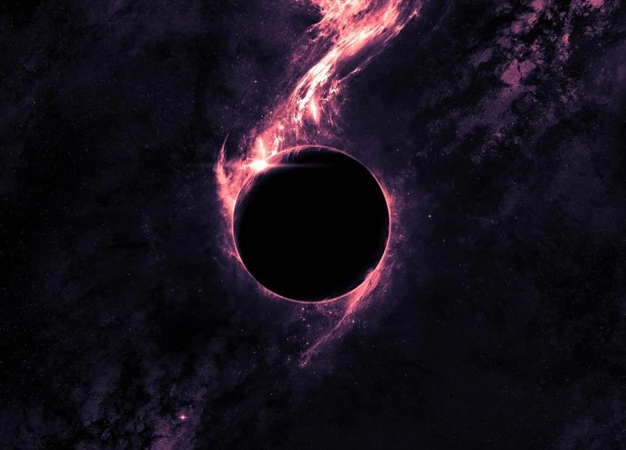Welcome to the enigmatic world of black holes, where the laws of physics seem to unravel and the boundaries of our understanding are pushed to their limits. In this captivating journey, we will delve into the mysteries that surround these cosmic anomalies and explore the mind-boggling phenomena that occur within their powerful gravitational grip. Prepare to be astounded as we unravel the formation, types, and characteristics of black holes, examine their role as celestial vacuum cleaners, ponder over the puzzling phenomena near their event horizons, contemplate their implications for the fate of the universe, and even delve into the quantum mysteries they hold. Join us as we embark on a voyage through space and time to uncover the secrets of these elusive cosmic giants.
Contents
- What are Black Holes?
- Characteristics of Black Holes
- Black Holes: The Ultimate Cosmic Vacuum Cleaners
- Puzzling Phenomena near Black Holes
- Black Holes and the Fate of the Universe
- Black Holes: The Quantum Connection
- Exploring Black Holes: Observations and Missions
- Future Frontiers: The Quest for Answers
- Conclusion
-
Frequently Asked Questions
- How are black holes formed?
- Can anything escape from a black hole?
- Do black holes only exist in outer space?
- Are there different types of black holes?
- What is the event horizon of a black hole?
- Can black holes move in space?
- What is the singularity inside a black hole?
- Do black holes emit any form of radiation?
- Can black holes destroy entire galaxies?
- Are there any missions or telescopes dedicated to studying black holes?
- References
-
Frequently Asked Questions
- How do black holes form?
- What are the different types of black holes?
- What is the event horizon of a black hole?
- What is singularity?
- How does matter get absorbed by black holes?
- What are accretion disks?
- How do jets form near black holes?
- What is time dilation near black holes?
- How does black hole evaporation occur?
- What are the theories beyond general relativity that explain black holes?
- References
- Read More
What are Black Holes?
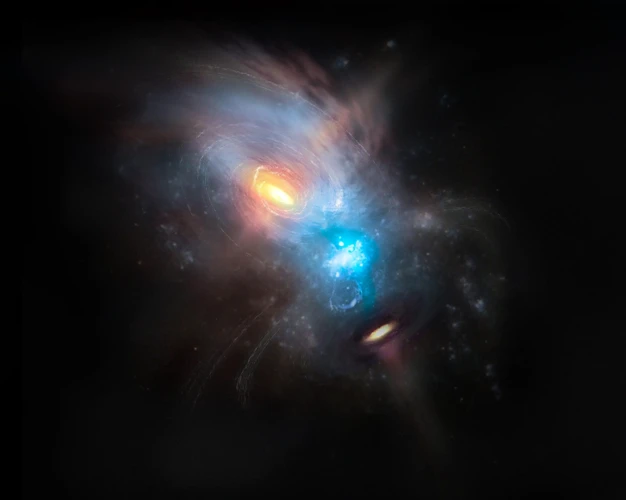
As we dive into the enigmatic depths of the universe, one question that has perplexed astronomers for decades is, what are black holes? These cosmic enigmas are regions in space where gravity is so incredibly strong that nothing, not even light, can escape their gravitational pull. They are formed from the remnants of massive stars that have undergone a catastrophic collapse. The core of the star collapses inward, creating a gravitational force that becomes so intense that it warps the fabric of space and time. It is this extreme curvature that gives rise to the phenomenon known as a black hole. These celestial entities exist in various sizes, from stellar mass black holes that are a few times more massive than our Sun to supermassive black holes that can have millions or even billions of times the mass of our Sun. The mysteries they hold and the immense gravitational forces they exert make black holes a source of fascination and intrigue for scientists and stargazers alike.
Formation of Black Holes
The formation of black holes is a captivating cosmic phenomenon that begins with the life cycle of massive stars. When a massive star exhausts its nuclear fuel, it undergoes a gravitational collapse. This collapse is initiated by a delicate balance between the inward pull of gravity and the outward pressure generated by nuclear fusion reactions in the star’s core. Once the star runs out of fuel, this balance is disrupted, causing the core to collapse under its own weight. As the core collapses, it releases an enormous amount of energy in a violent explosion known as a supernova. This explosion expels the outer layers of the star into space, leaving behind a small, dense remnant called a stellar remnant.
The fate of the stellar remnant depends on its mass. If the mass is less than about three times the mass of our Sun, it will become a white dwarf. However, if the stellar remnant has a mass greater than this critical value, known as the Chandrasekhar limit, it will continue to collapse further. The collapse is so intense that it exceeds the limits of known physics, resulting in the formation of a black hole.
In the case of black hole formation, the core collapses to such a degree that it becomes infinitely dense, creating a gravitational singularity. This singularity is surrounded by a boundary known as the event horizon, beyond which not even light can escape. The exact mechanisms that govern this collapse and the formation of the singularity are still highly debated among scientists.
Intriguingly, recent research suggests that black holes may also form through other mechanisms, such as the merger of two neutron stars or by accretion of matter onto a pre-existing black hole. These alternative pathways to black hole formation add to the complexity and mystery surrounding these cosmic entities.
Understanding the formation of black holes is not only a fascinating area of study but also crucial for our comprehension of the evolution and dynamics of the universe. By unraveling the intricacies of their formation, scientists hope to unlock insights into stellar evolution, gravitational physics, and the cosmic landscape as a whole. As we continue our exploration of black holes, we will further delve into their varying types and the captivating characteristics that define them.
Types of Black Holes
Black holes come in different flavors, each with its own unique characteristics and formation processes. The most common types of black holes are stellar-mass black holes and supermassive black holes.
Stellar-mass black holes are born from the explosive deaths of massive stars. When a massive star exhausts its nuclear fuel, it undergoes a supernova explosion, violently ejecting its outer layers into space. The core that remains collapses under its own gravity, forming a stellar-mass black hole. These black holes typically have a mass ranging from a few times to tens of times that of our Sun.
On the other end of the size spectrum, we have supermassive black holes. These behemoths reside in the centers of galaxies and can have masses millions or even billions of times greater than our Sun. The origins of supermassive black holes are still a topic of active research, but they are believed to form through the gradual accumulation of mass over time, mergers with other black holes, or the collapse of gigantic gas clouds. These cosmic giants play a crucial role in the evolution and dynamics of galaxies.
Additionally, there is a less well-known category of black holes called primordial black holes. These hypothetical black holes are thought to have formed shortly after the Big Bang, due to irregularities in the distribution of matter. Primordial black holes could have varying masses, ranging from tiny ones that have evaporated by now to those with masses similar to stellar-mass black holes.
As our understanding of black holes continues to evolve, astronomers are also exploring the existence of intermediate-mass black holes, which fall between stellar-mass and supermassive black holes. These intermediate-sized black holes could provide valuable insights into the transition between the two primary types.
Characteristics of Black Holes
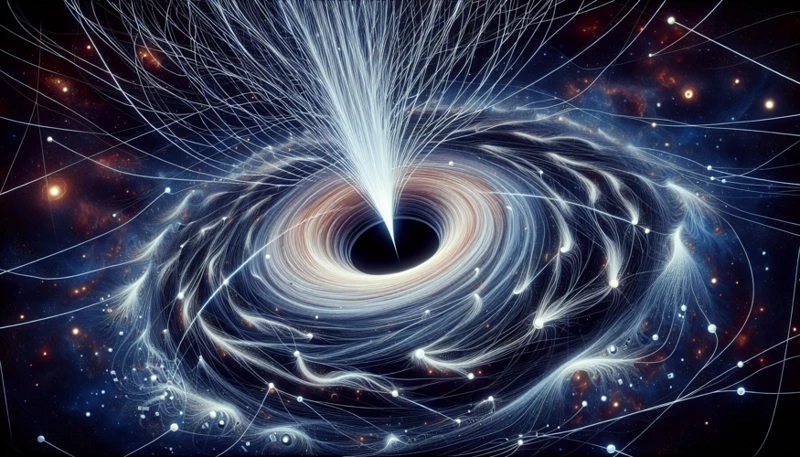
Once we grasp the concept of black holes, it’s time to delve into their remarkable characteristics. Two key elements define a black hole: the event horizon and the singularity. The event horizon is a boundary beyond which anything that enters is doomed to be trapped forever, as escape becomes impossible due to the immense gravitational pull. The singularity, on the other hand, is a point at the center of a black hole where matter is crushed into infinite density, defying our understanding of physics. The characteristics of black holes also include their mass, spin, and charge. These properties determine the behavior of matter in and around the black hole. Stellar-mass black holes typically have a mass ranging from a few times that of our Sun to tens of times, while supermassive black holes can possess millions or even billions of solar masses. The spin of a black hole refers to its rotation, which can influence the surrounding spacetime. Additionally, black holes can carry an electrical charge, although this is believed to be rarity. Understanding these unique characteristics is crucial in unraveling the mysteries they hold and exploring their impact on the universe.
Event Horizon and Singularity
The event horizon is a defining characteristic of a black hole. It is the boundary beyond which no information or light can escape the gravitational pull of the black hole. At this point, the escape velocity exceeds the speed of light, making it impossible for anything to break free. The event horizon is like an invisible barrier that separates the black hole from the outside universe.
Deep within the event horizon lies the singularity, a point of infinite density and zero volume. According to our current understanding of physics, all the mass of the collapsed star is concentrated at this unimaginably small point. The laws of physics as we know them break down at the singularity, and our current theories cannot explain what happens at this point of infinite density.
Imagine falling into a black hole and reaching the event horizon. From the perspective of an outside observer, time appears to slow down as you get closer to the event horizon due to the intense gravitational field. As you cross the event horizon, time as we know it comes to a halt, and you are forever trapped within the black hole.
The existence of a singularity raises profound questions about the nature of the universe. It challenges our understanding of space, time, and the behavior of matter under such extreme conditions. Exploring the event horizon and the singularity is a key focus for scientists seeking to unravel the mysteries of black holes and gain deeper insights into the workings of the cosmos.
For more fascinating insights into the mysteries of the universe, check out our exploration of planetary alignments and their impact on social movements.
Mass, Spin, and Charge
The properties that define a black hole go beyond its sheer gravitational force. When we delve deeper into the enigma of black holes, we encounter three key characteristics: mass, spin, and charge. Mass refers to the amount of matter a black hole contains. It determines the strength of its gravitational pull and the size of its event horizon, the boundary beyond which nothing can escape. Massive black holes, such as the supermassive ones lurking at the centers of galaxies, exert a tremendous gravitational force that can influence the motion of surrounding objects and even dictate the structure and evolution of their host galaxies.
Spin, on the other hand, relates to the rotation of a black hole. Just like a spinning top, a black hole can rotate on its axis. The spin of a black hole has a profound impact on its behavior. It can cause spacetime to stretch and twist, giving rise to intriguing phenomena such as frame-dragging, where the rotation of the black hole drags the surrounding spacetime along with it.
Finally, we come to the concept of charge. While black holes are predominantly believed to be electrically neutral, there is a theoretical possibility that they can possess an electric charge. A charged black hole would have an electromagnetic field surrounding it, altering the dynamics of nearby matter and electromagnetic radiation. However, it is important to note that charged black holes are currently hypothetical, as no definitive evidence of their existence has been found.
Understanding and measuring these properties – mass, spin, and charge – is crucial in deciphering the behavior and impact of black holes in our universe. By studying these characteristics, scientists can unlock insights into the formation, evolution, and interaction of these cosmic abysses, shedding light on the profound mysteries that permeate the enigmatic realm of black holes.
Black Holes: The Ultimate Cosmic Vacuum Cleaners
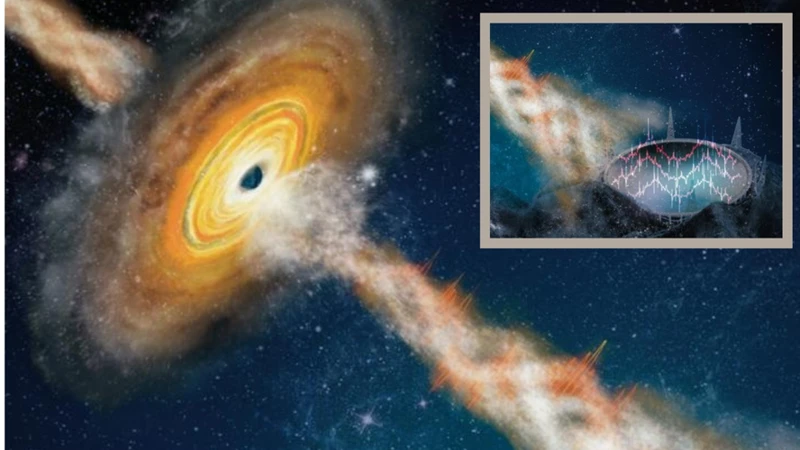
In the vast expanse of the cosmos, black holes reign as the ultimate cosmic vacuum cleaners, devouring matter and energy with relentless force. Their gravitational pull is so intense that anything that ventures too close is irreversibly drawn into their depths. The process by which black holes consume matter involves the formation of accretion disks, swirling discs of gas and dust that orbit around the black hole. As particles spiral towards the event horizon, the point of no return, they collide and release immense amounts of energy in the form of radiation. This phenomenon, known as accretion, powers the luminosity of active galaxies and quasars. Additionally, black holes can generate powerful outflows and jets of high-energy particles, which blast into space at near-light speeds. These jets can extend over vast distances, carving channels through interstellar space. The mechanisms behind these awe-inspiring phenomena are still being studied and understood, offering a never-ending source of fascination and scientific inquiry.
Matter Absorption and Accretion Disks
When it comes to the behavior of matter near black holes, a fascinating phenomenon occurs known as matter absorption and accretion disks. As matter gets too close to a black hole, it is pulled in by its intense gravitational force. However, not all matter falls directly into the black hole. Instead, it forms a disk-like structure around the black hole called an accretion disk. The matter in the accretion disk spirals inward due to the gravitational pull of the black hole. This process releases an enormous amount of energy in the form of heat and light, making the accretion disk glow brilliantly. The temperature of the accretion disk increases as the matter gets closer to the black hole, resulting in the emission of high-energy radiation, including X-rays and gamma-rays. The accretion disk serves as a cosmic feeding frenzy, as matter from surrounding objects, such as companion stars or interstellar gas clouds, is drawn in and consumed by the black hole. This process is highly efficient, with black holes capable of devouring large amounts of matter within a relatively short period of time. The study of these accretion disks and the matter they contain provides invaluable insights into the physics of extreme environments and the behavior of matter under such intense gravitational forces.
Jet Formation and Outflows
Jet formation and outflows are fascinating phenomena associated with black holes that continue to puzzle scientists. When matter falls into a black hole, it doesn’t mean that everything is instantly absorbed. Instead, a fraction of the infalling material can be redirected and expelled in the form of powerful jets. These jets are narrow beams of accelerated particles and energetic radiation that shoot out from the immediate vicinity of the black hole’s event horizon. They can extend for thousands of light-years into space, displaying immense power and velocity.
The exact mechanism behind the formation of these jets is still not fully understood. One popular theory suggests that the jets are generated by the intense magnetic fields near the black hole. As matter spirals inward, the magnetic fields become twisted and highly energized. This energized magnetic field then channels outflows of particles from the black hole’s vicinity, accelerating them to nearly the speed of light. Another possibility is that the jets arise from the rotational energy of the black hole itself.
The jets emitted by black holes have significant impacts on their surrounding environments. They can influence the formation of stars and planetary systems in galaxies and play a key role in the feedback mechanism that regulates the growth of galaxies. Additionally, these powerful jets can interact with interstellar material, creating shock waves and heating up surrounding gases. This interaction can trigger the formation of new stars and enrich the surrounding space with heavy elements.
Observations of these jets have been made using various telescopes and instruments across different wavelengths of light, from radio waves to X-rays. Scientists have studied the intricate structures and dynamics of jets to gain insights into the processes occurring near black holes. The data gathered from these observations help refine theoretical models and bring us closer to unraveling the mysteries of how black holes generate such astoundingly powerful and far-reaching jets.
The formation of jets and outflows from black holes is a mesmerizing phenomenon that showcases the sheer power and complexities associated with these cosmic entities. The intricate interplay between matter, energy, and magnetic fields near black holes contributes to the creation of these remarkable jets. Studying and understanding the mechanisms behind jet formation and outflows are crucial steps towards comprehending the fundamental nature of black holes and their impact on the surrounding universe.
Puzzling Phenomena near Black Holes
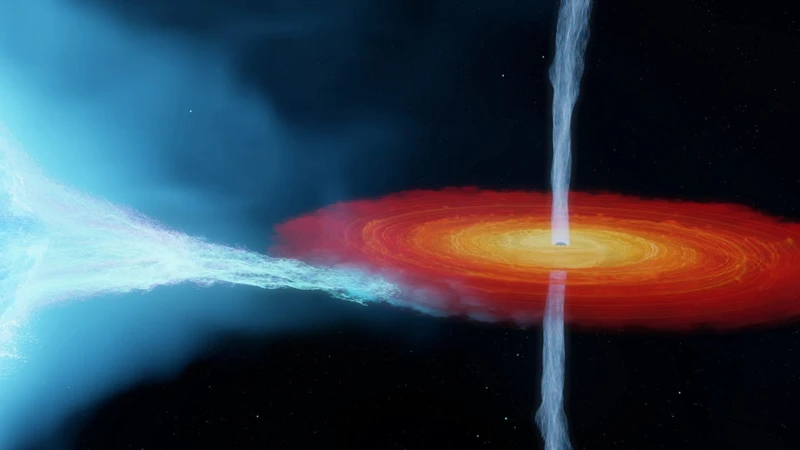
As we venture closer to the event horizon of a black hole, we find ourselves immersed in a realm of mind-bending phenomena and paradoxes that challenge our understanding of the universe. Puzzling phenomena near black holes include mind-boggling concepts such as time dilation and gravitational redshift. Time dilation occurs as a result of the immense gravitational forces near a black hole, where time appears to slow down for an observer far from the black hole compared to someone closer to its gravitational grip. Gravitational redshift, on the other hand, refers to the phenomenon where light coming from an object near a black hole appears stretched, causing its wavelength to shift towards the red end of the spectrum. Another perplexing effect is the warping of spacetime, where the intense gravitational field near a black hole causes the fabric of space and time to bend and twist in unimaginable ways. As we unravel these puzzling phenomena, we begin to grasp the enormity and complexity of black holes and the profound impact they have on the very fabric of our universe.
Time Dilation and Gravitational Redshift
In the perplexing realm of black holes, two mind-bending phenomena arise: time dilation and gravitational redshift. Time dilation, a concept proposed by Einstein’s theory of relativity, suggests that time can flow at different rates depending on the strength of the gravitational field. Near a black hole, where gravity is extraordinarily intense, time itself appears to slow down. This means that an object or observer near a black hole would experience time passing at a slower rate compared to someone at a more distant location. This mind-boggling effect has been observed and confirmed through various experiments and observations.
Gravitational redshift, on the other hand, refers to the phenomenon of light being stretched into longer wavelengths as it escapes the gravitational pull of a black hole. As light travels away from the intense gravity of a black hole, its energy is reduced, causing a shift towards the red end of the electromagnetic spectrum. This shift in wavelength can be observed by astronomers using powerful telescopes and spectroscopic techniques. Gravitational redshift provides valuable insights into the extreme gravitational forces near black holes and contributes to our understanding of the nature of spacetime.
To put it in perspective, imagine an observer hovering just above the event horizon of a black hole. Time would appear to slow down significantly for this observer compared to someone located far away from the black hole. Any light emitted by the observer would be redshifted, indicating that the light has lost energy as it struggled against the immense gravitational pull of the black hole.
These phenomena not only challenge our intuition about how time and space operate but also have practical implications. Understanding time dilation and gravitational redshift near black holes has implications for satellite navigation systems and the accuracy of global positioning systems (GPS), as these technologies rely on precise measurements of time and the behavior of light.
Time dilation and gravitational redshift are just two of the mind-blowing effects that occur near black holes, pushing the boundaries of our understanding of the cosmos. These phenomena not only offer insights into the nature of space and time but also provide astronomers with valuable tools to study and measure the properties of these mysterious cosmic entities.
Warping of Spacetime
The warping of spacetime is a mind-bending concept that plays a crucial role in understanding the behavior of black holes. According to Albert Einstein’s theory of general relativity, mass and energy not only create a gravitational force, but they also curve the fabric of spacetime itself. This means that the presence of a black hole, with its immense mass concentrated in an infinitesimally small space, causes an extreme curvature of spacetime in its vicinity. The curvature becomes so intense that it creates a gravitational well, like a deep pit, where anything that comes close to the black hole gets pulled in inexorably. This warping of spacetime also has profound implications for the flow of time. Near a black hole, time itself is affected by the intense gravitational forces, causing it to slow down significantly. This phenomenon, known as time dilation, means that for an observer close to a black hole, time appears to pass much more slowly compared to someone farther away. This strange effect has been observed and verified through various astronomical observations and experiments. The warping of spacetime near black holes is not only fascinating from a theoretical standpoint but also has practical implications for space exploration and our understanding of the mysteries of the universe. It highlights the profound connection between gravity, mass, and the bending of spacetime, allowing us to glimpse the extraordinary nature of black holes and their impact on the fabric of the cosmos.
Black Holes and the Fate of the Universe

In the vast expanse of the cosmos, black holes not only captivate our imagination but also play a crucial role in shaping the fate of the universe. The interplay between black holes and the larger cosmic landscape is a topic of great fascination and study for astrophysicists. One of the pivotal concepts is the idea of black hole evaporation, proposed by renowned physicist Stephen Hawking. According to Hawking’s theory, black holes slowly lose mass over time through the emission of particles, eventually evaporating completely. This raises profound questions about the ultimate destiny of black holes and the implications for the universe. Additionally, the existence of supermassive black holes has been found to be intrinsically linked to the evolution of galaxies. These colossal black holes reside at the centers of galaxies, influencing the growth and dynamics of their structures. The intricate relationship between black holes and the fate of the universe continues to arouse both intrigue and bewilderment as scientists explore the depths of this cosmic enigma.
Black Hole Evaporation
Black hole evaporation is a fascinating concept that stems from quantum mechanics and the works of renowned physicist Stephen Hawking. According to his groundbreaking theory, black holes are not eternal entities but rather gradually lose their mass and energy over time. This process is known as black hole evaporation. It occurs through a phenomenon called Hawking radiation.
Hawking radiation is a consequence of the uncertainty principle, which states that there is always a level of inherent uncertainty in measuring certain properties of particles, such as their position and momentum. Near the event horizon of a black hole, pairs of virtual particles and antiparticles are constantly appearing and annihilating each other. However, if one of these particle pair appears just at the edge of the event horizon, it can escape while its partner falls into the black hole. This escaping particle becomes real and carries away a tiny amount of mass and energy from the black hole.
Over an extremely long period of time, this continuous process of particle creation and escape leads to the gradual decrease in mass and energy of the black hole. As the black hole loses mass, its gravitational pull weakens, eventually reaching a point where it can no longer maintain its gravitational grip, and it evaporates completely. The time it takes for a black hole to evaporate depends on its mass, with smaller black holes evaporating faster than larger ones.
Black hole evaporation has far-reaching implications and raises intriguing questions about the conservation of information. According to the laws of quantum mechanics, information cannot be destroyed. However, when a black hole evaporates, it seemingly destroys the information contained within it. This discrepancy, known as the “information paradox,” has been the subject of intense scientific debate and remains an unsolved mystery.
In recent years, various theoretical proposals and hypotheses have emerged to reconcile this paradox, suggesting that information may be somehow preserved and encoded in the radiation emitted during the evaporation process. Further research and advancements in quantum gravity and the understanding of the fundamental nature of spacetime are crucial to unraveling the mysteries of black hole evaporation and the fate of the information they contain.
Black hole evaporation is a remarkable phenomenon driven by Hawking radiation, where black holes gradually lose mass and energy over time. While this process challenges our understanding of information preservation, it also offers opportunities to delve deeper into the realm of quantum gravity and reconcile fundamental aspects of physics.
Supermassive Black Holes and Galaxy Evolution
Supermassive black holes, as the name suggests, are black holes with masses millions or even billions of times greater than that of our Sun. These behemoths reside at the centers of most galaxies, including our own Milky Way. The relationship between supermassive black holes and galaxy evolution has been a subject of intense study and debate among scientists.
One prevailing theory suggests that supermassive black holes play a crucial role in shaping the galaxies they inhabit. As matter falls into these massive gravitational sinks, it forms accretion disks—a swirling disk of gas and dust that spirals inward, feeding the black hole. The rapid rotation and high temperatures within the accretion disk release immense amounts of energy, resulting in the formation of powerful jets that shoot out from the black hole’s poles.
These jets, consisting of highly energetic particles, can have a profound impact on their host galaxies. They inject energy into the surrounding gas and dust, heating and ionizing the material. This process, known as feedback, regulates the star formation within the galaxy. The jets can heat the gas, preventing it from collapsing and forming new stars. Consequently, the presence of a supermassive black hole can influence the growth and evolution of the entire galaxy.
The enormous gravitational pull of supermassive black holes can also affect the structure and dynamics of their host galaxies. The gravitational forces exerted by these black holes can shape the distribution of stars and alter the orbital paths of neighboring objects, including other black holes and stars. Studies have shown that the presence of a supermassive black hole at the center of a galaxy can determine its overall shape, size, and even the growth of galactic bulges.
However, the exact mechanisms and interactions between supermassive black holes and their host galaxies are still not fully understood. Scientists continue to investigate how these cosmic giants form, how they grow, and how they contribute to the complex process of galaxy evolution. The study of supermassive black holes and their impact on galaxies is a fascinating and ongoing area of research, with numerous unanswered questions waiting to be unraveled.
Supermassive black holes, with their immense masses and powerful jets, exert a significant influence on the evolution of their host galaxies. Their feedback processes regulate star formation, while their gravitational forces shape the structures and dynamics of galaxies. Understanding the relationship between supermassive black holes and galaxy evolution is crucial for unraveling the mysteries of our vast universe.
Black Holes: The Quantum Connection

In the quest to understand black holes, scientists have been drawn into the fascinating realm of quantum physics. The connection between black holes and the quantum world has sparked a myriad of perplexing questions and paradoxes. One of the most renowned concepts in this realm is Hawking radiation, named after the renowned physicist Stephen Hawking. According to quantum theory, particles and antiparticles can spontaneously appear and annihilate each other in empty space. Near the event horizon of a black hole, however, something extraordinary happens. These particle-antiparticle pairs can be split apart by the strong gravitational forces, with one particle falling into the black hole while the other escapes into space, resulting in the emission of radiation. This phenomenon challenges our understanding of the conservation of information, as it suggests that information can be lost in the process. The study of black holes and their quantum nature has also led scientists to explore theories beyond Einstein’s General Relativity, such as string theory and loop quantum gravity, in an attempt to unify gravity with the other fundamental forces of nature. The quantum connection is an enthralling aspect of black hole research that continues to push the boundaries of our knowledge and raise profound questions about the nature of the universe.
Hawking Radiation and Information Paradox
Stephen Hawking, the renowned physicist, revolutionized our understanding of black holes with his groundbreaking discovery of Hawking radiation. According to classical physics, nothing can escape the gravitational pull of a black hole once it crosses the event horizon. However, Hawking proposed that black holes emit a faint radiation due to quantum effects near the event horizon. This radiation is now known as Hawking radiation.
Hawking radiation arises from the interaction between quantum mechanics and general relativity, the two pillars of modern physics. According to quantum mechanics, particles and antiparticles can spontaneously appear and annihilate each other, creating pairs of virtual particles in empty space. Hawking suggested that near the event horizon of a black hole, one of these virtual particles might fall into the black hole while the other escapes. This escape of energy results in the emission of Hawking radiation.
Interestingly, Hawking radiation has profound consequences for the fate of information inside a black hole, giving rise to the information paradox. According to the principles of quantum mechanics, information is conserved and should never be lost. However, as particles fall into a black hole and are thought to be destroyed at the singularity, this raises the question of what happens to the information they carry.
Hawking himself initially suggested that the information might be lost forever, contradicting the fundamental principles of quantum mechanics. This idea caused a stir in the scientific community and led to intense debates and research on the nature of black holes and the ultimate fate of information.
Various theories and proposed solutions to the information paradox have emerged over the years. One prominent idea is that the information is somehow encoded in the Hawking radiation itself. Another notion suggests that the information may escape through wormholes or be preserved in a remnant left behind after the black hole evaporates completely.
The quest to resolve the information paradox continues to be an active area of research, bringing together concepts from quantum mechanics, general relativity, and even speculative theories like string theory. The resolution of this paradox will not only deepen our understanding of black holes but also provide invaluable insights into the nature of the universe and the fundamental laws that govern it.
Theories beyond General Relativity
The topic of opens up a realm of speculation and exploration in the field of astrophysics. While General Relativity has been a remarkably successful theory in describing the behavior of gravity and the structure of the universe, there are still many unanswered questions that intrigue scientists. One such question is the nature of black holes and their connection to the elusive realm of quantum physics. General Relativity provides a classical description of gravity, treating it as a geometric curvature of spacetime. However, when dealing with the extreme conditions near a black hole’s singularity, it is believed that the laws of classical physics break down and a more comprehensive theory is needed. Various theoretical frameworks have been proposed to reconcile General Relativity with quantum mechanics, including string theory, loop quantum gravity, and quantum field theory in curved spacetime. These theories aim to provide a unified understanding of gravity at both the macroscopic scale of black holes and the microscopic scale of subatomic particles. However, the quest for a complete theory that can encompass the mysteries of black holes and quantum gravity continues, leaving scientists in a perpetual state of wonder and curiosity about the true nature of the cosmos.
Exploring Black Holes: Observations and Missions
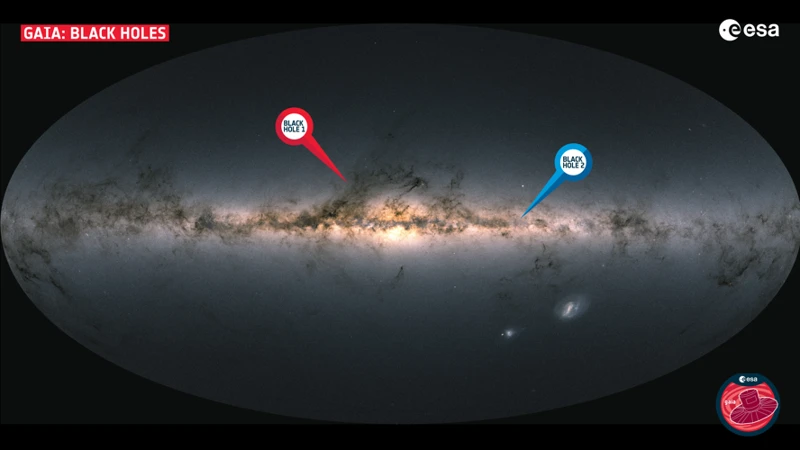
Exploring Black Holes: Observations and Missions
1. Space-based Observatories: To study black holes, astronomers rely on space-based observatories equipped with specialized instruments that can detect various forms of radiation emitted by black holes. One such mission is the Chandra X-ray Observatory, which has provided invaluable insights into the X-ray emissions from black hole systems. By observing these high-energy X-rays, scientists can decipher the temperature, composition, and velocity of the matter falling into the black hole. Another notable mission is the Hubble Space Telescope, which has captured stunning images of black holes and their surrounding environments in visible and ultraviolet light.
2. Ground-based Observatories: Ground-based telescopes, equipped with advanced technology and adaptive optics, also contribute to the exploration of black holes. The Very Large Telescope (VLT) in Chile is one such remarkable facility that has aided in the observation of supermassive black holes at the center of galaxies. By studying the movement of stars near these black holes, scientists can measure their mass and infer their existence.
3. Gravitational Wave Detectors: In 2015, a groundbreaking discovery was made when the Laser Interferometer Gravitational-Wave Observatory (LIGO) detected gravitational waves for the first time. These ripples in spacetime are caused by the violent merger of two black holes. Gravitational wave detectors allow scientists to “listen” to the universe and capture the gravitational waves emitted during such events. This innovative technique has opened up a new realm of exploration and has provided a direct means of studying black holes.
4. Future Missions: Scientists and engineers are continually devising new missions and technologies to further our understanding of black holes. One such endeavor is the Event Horizon Telescope (EHT), which combines multiple radio telescopes around the globe to create an Earth-sized virtual telescope. The EHT has already provided us with the first-ever direct image of a black hole’s event horizon in the galaxy M87. Additionally, future missions like the James Webb Space Telescope (JWST) and the European Space Agency’s Athena mission will enable us to study black holes and their surrounding environments in unprecedented detail, yielding further insights into their properties and behavior.
In our quest to explore the mysteries of black holes, these observations and missions play a crucial role. They provide us with valuable data, images, and insights that allow scientists to probe these enigmatic cosmic entities and gain a deeper understanding of their nature and profound impact on the universe.
Future Frontiers: The Quest for Answers

The quest for answers regarding black holes is an ongoing endeavor, and the future frontiers of research hold tremendous potential for further unraveling their mysteries. Scientists and astronomers around the world are actively engaged in pushing the boundaries of knowledge to better understand these enigmatic cosmic objects. One area of exploration is the study of gravitational waves, ripples in the fabric of spacetime caused by the motion of massive objects. The detection of gravitational waves in 2015 has opened up a new window into the study of black holes, allowing scientists to observe and analyze the mergers of black hole binaries and gain insights into their properties and formation. These observations provide valuable data that can enhance our understanding of black hole dynamics and evolution.
Another frontier in the quest for answers lies in the field of quantum gravity. Our current understanding of the universe is based on two separate theories: general relativity, which describes gravity at large scales, and quantum mechanics, which governs the behavior of particles on the smallest scales. However, these theories are not fully compatible, and the reconciliation of quantum mechanics with gravity remains an unsolved problem in physics. The study of black holes provides a unique opportunity to delve into the realm of quantum gravity, as they are believed to be the ultimate testing grounds for theories at the forefront of fundamental physics. Researchers are exploring concepts such as loop quantum gravity, string theory, and holography to gain new insights into the nature of black holes and their place within the quantum framework of the universe.
The development and refinement of advanced technologies and observational techniques are crucial for the future exploration of black holes. Large-scale international collaborations, such as the Event Horizon Telescope (EHT), continue to push the boundaries of what is possible in observing black holes. The EHT made history in 2019 by capturing the first-ever direct image of a black hole’s silhouette, providing stunning visual evidence of the existence of these cosmic behemoths. Future missions and instruments, such as the Laser Interferometer Space Antenna (LISA), will further enhance our ability to detect and study black holes in different wavelengths and gravitational wave frequencies, enabling us to explore the universe with unprecedented precision.
The future frontiers of black hole research hold immense promise for advancing our understanding of these enigmatic objects. By studying gravitational waves, delving into the realm of quantum gravity, and harnessing cutting-edge technologies, scientists and researchers are embarking on a quest for answers that could revolutionize our understanding of the universe. The mysteries of black holes continue to beckon us, urging us to delve deeper into the unknown and unlock the secrets that lie within these cosmic phenomena.
Conclusion

In conclusion, the mysteries of black holes continue to captivate our imagination and challenge our understanding of the universe. From their formation to their cosmic role as vacuum cleaners, from the mind-bending physics near their event horizons to their potential impact on the fate of the universe, black holes have proven to be one of the most intriguing and enigmatic phenomena in astrophysics. As we explore their quantum connections and embark on missions to observe and study them, we inch closer to unraveling their secrets. Yet, many questions still remain unanswered. The quest to comprehend black holes and their intricacies pushes the boundaries of scientific exploration and fuels our curiosity to delve deeper into the cosmos. With ongoing research, future observations, and technological advancements, we can look forward to unlocking more of the mysteries hidden within these cosmic giants. The study of black holes not only provides valuable insights into the fundamental laws of physics but also reminds us of the vastness and complexity of our universe, leaving us in awe of the wonders that lie beyond our reach. As we gaze into the cosmos, we are reminded of how much more there is to discover and how much further we have to go in our quest for knowledge and understanding.
Frequently Asked Questions

How are black holes formed?
Black holes are formed from the remnants of massive stars that have undergone a catastrophic collapse. When a star runs out of nuclear fuel, gravity causes its core to collapse inward, creating a black hole.
Can anything escape from a black hole?
No, once an object crosses the event horizon of a black hole, it is believed to be captured forever. The gravitational pull is so strong that not even light can escape.
Do black holes only exist in outer space?
Yes, black holes are cosmic entities that exist in outer space. They are not found on Earth or within our atmosphere.
Are there different types of black holes?
Yes, there are different types of black holes. Stellar black holes are formed from the collapse of massive stars, while supermassive black holes reside at the centers of galaxies and are millions or billions of times more massive than our Sun.
What is the event horizon of a black hole?
The event horizon of a black hole is the boundary beyond which nothing can escape its gravitational pull. It marks the point of no return.
Can black holes move in space?
Yes, black holes can move in space just like any other celestial object. They can be influenced by the gravitational forces of nearby stars and galaxies, causing them to drift or be pulled in certain directions.
What is the singularity inside a black hole?
The singularity inside a black hole is a point of infinite density and gravitational force. It is believed to be the core of the collapsed star where matter is crushed to an infinitely small point.
Do black holes emit any form of radiation?
Yes, black holes can emit radiation through a phenomenon known as Hawking radiation. This radiation is theorized to be particles created near the event horizon that escape before falling into the black hole.
Can black holes destroy entire galaxies?
While black holes can have a significant impact on their surroundings, they do not typically “destroy” entire galaxies. However, the gravitational forces of supermassive black holes can influence the formation and evolution of galaxies over time.
Are there any missions or telescopes dedicated to studying black holes?
Yes, there are several missions and telescopes dedicated to studying black holes. Examples include the Chandra X-ray Observatory, the Event Horizon Telescope, and future missions such as the James Webb Space Telescope.
References
Frequently Asked Questions

How do black holes form?
Black holes form when massive stars collapse under their own gravitational pull, causing an intense concentration of mass in a tiny space.
What are the different types of black holes?
There are three main types of black holes: stellar black holes, which are formed from the collapse of massive stars; supermassive black holes, which reside at the centers of galaxies; and intermediate black holes, which have masses between stellar black holes and supermassive black holes.
What is the event horizon of a black hole?
The event horizon is the boundary around a black hole beyond which nothing can escape, not even light. It marks the point of no return.
What is singularity?
Singularity is the point at the very center of a black hole where the gravitational pull becomes infinitely strong and space-time curvature becomes infinite.
How does matter get absorbed by black holes?
Black holes have a strong gravitational pull that attracts nearby matter. As matter approaches the event horizon, it gets stretched and torn apart, eventually being pulled into the black hole.
What are accretion disks?
An accretion disk is a rotating disk of hot gas and dust that forms around a black hole. It is formed by matter that falls towards the black hole but doesn’t get directly absorbed, instead, it gets trapped in a swirling disk-like structure.
How do jets form near black holes?
Jets are powerful streams of particles that are emitted by black holes. The exact mechanism of jet formation is still a mystery, but it is believed to be related to the strong magnetic fields near black holes.
What is time dilation near black holes?
Time dilation is a phenomenon where time appears to move slower for an object near a black hole compared to an observer far away from the black hole. This is caused by the immense gravity of the black hole bending the fabric of space-time.
How does black hole evaporation occur?
Black hole evaporation refers to a theoretical process where black holes slowly lose mass over an extremely long period of time due to the emission of particles and radiation, as described by Stephen Hawking’s theory of Hawking radiation.
What are the theories beyond general relativity that explain black holes?
Several theories, such as string theory and loop quantum gravity, aim to go beyond general relativity and provide a more complete understanding of black holes. These theories attempt to reconcile gravity with quantum mechanics and address the singularity problem at the center of black holes.

